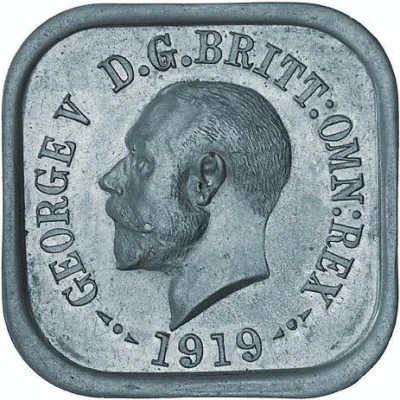


© Museums Victoria
1 Penny - George V Kookaburra Pattern - Type
1919 year| Copper-nickel | 3.88 g | - |
| Issuer | Australia |
|---|---|
| King | George V (1910-1936) |
| Type | Pattern |
| Year | 1919 |
| Value | 1 Penny (1⁄240) |
| Currency | Pound (1788-1966) |
| Composition | Copper-nickel |
| Weight | 3.88 g |
| Size | 18 mm |
| Shape | Square with rounded corners |
| Technique | Milled |
| Orientation | Medal alignment ↑↑ |
| Demonetized | Yes |
| Updated | 2024-10-04 |
| Numista | N#28488 |
|---|---|
| Rarity index | 97% |
Reverse
A plumper kookaburra perched on a section of a tree branch
Script: Latin
Lettering:
AUSTRALIA
ONE PENNY
Edge
Plain
Comment
Type: M6 / R6Dies prepared by the Royal Mint, London
Between 1919 and 1921 a series of experiments were undertaken for a square coinage in nickel to replace the large bronze penny and halfpenny coins.
Interesting fact
One interesting fact about the 1919 Australian Kookaburra Pattern Penny is that it features a unique reverse design that was never used on any other coin. The Kookaburra, a native Australian bird, is depicted perched on a tree branch, surrounded by leaves and berries. This design was created by artist and sculptor, Edgar Bertram MacKennal, and was intended to be used on the Australian penny, but it was ultimately rejected in favor of a more traditional design featuring the monarch's portrait. As a result, the Kookaburra Pattern Penny has become a highly sought-after collector's item among numismatists.



